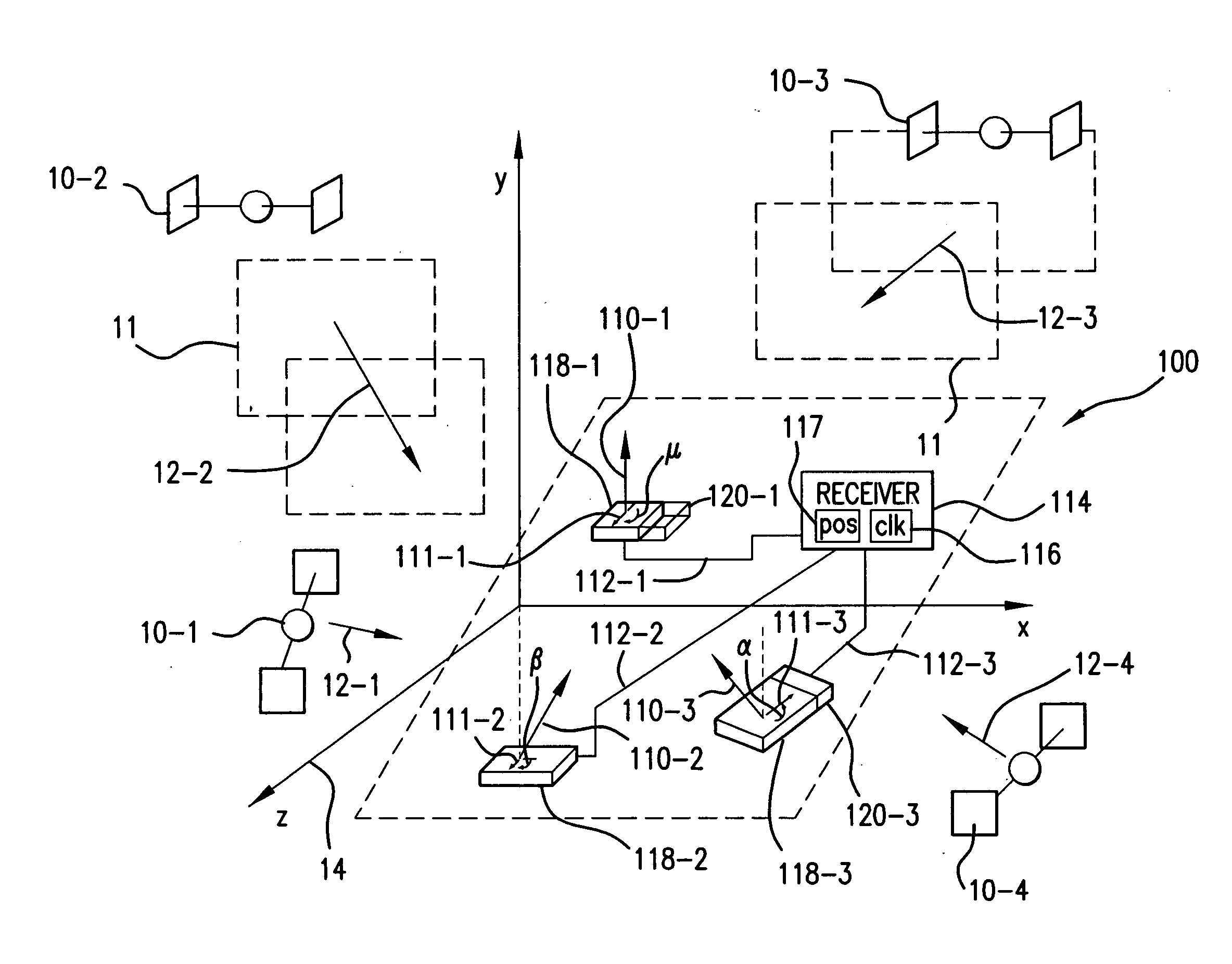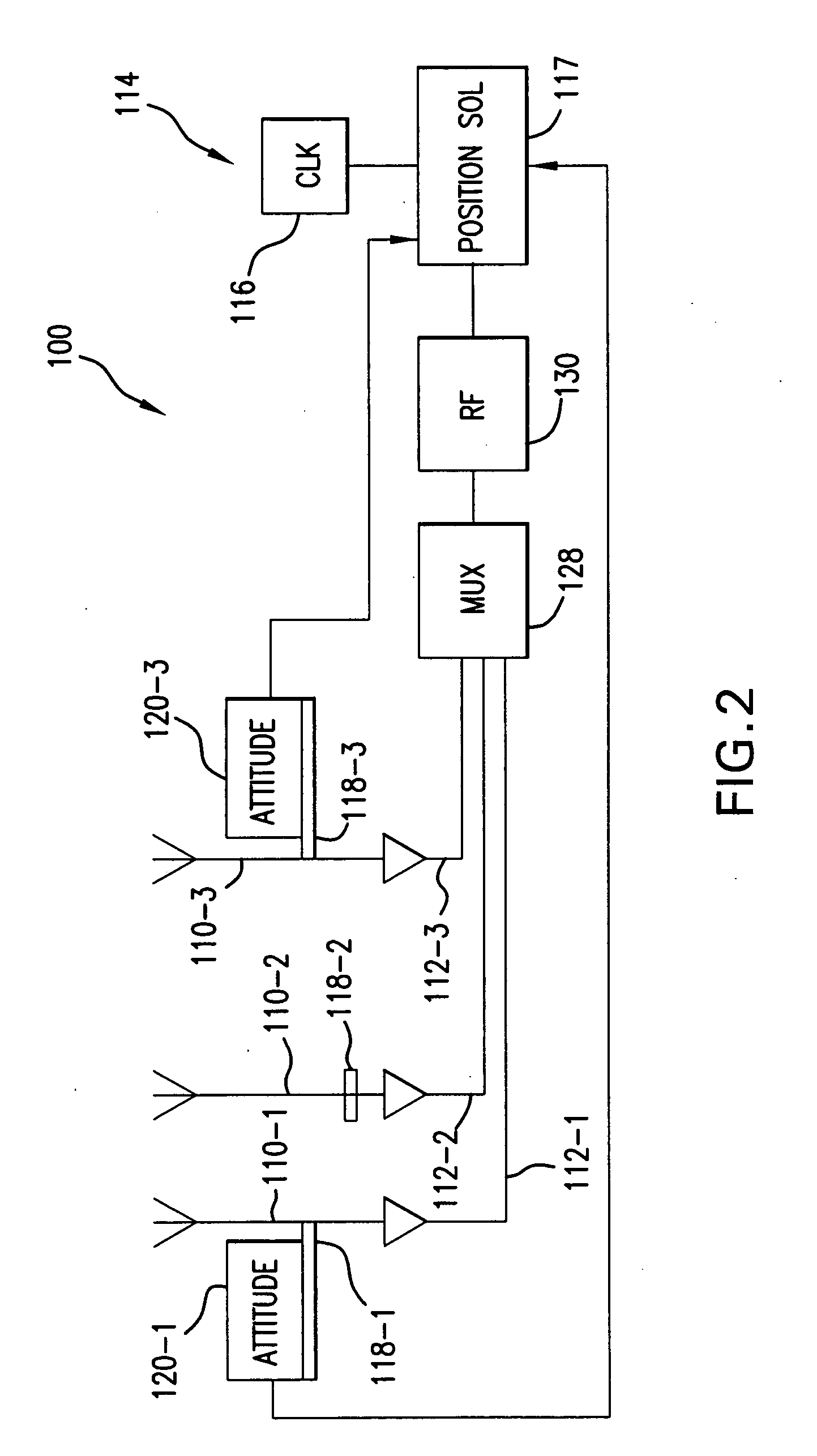Method and system for circular polarization correction for independently moving GNSS antennas
a technology of gnss antennas and antennas, applied in the field of methods and systems for circular polarization correction of independently moving gnss antennas, can solve problems such as limited systems, and achieve the effect of high accuracy
- Summary
- Abstract
- Description
- Claims
- Application Information
AI Technical Summary
Benefits of technology
Problems solved by technology
Method used
Image
Examples
Embodiment Construction
[0045]FIG. 1 is a schematic diagram illustrating a position detection system 100 that has been constructed according to the principles of the present invention.
[0046] In more detail, a number of satellites are provided by the global positioning system (10-1, 10-2, 10-3, and 10-4). In the preferred embodiment, these GPS satellites are satellites of the NAVSTAR, GLONASS, and / or Galileo systems. They each broadcast carrier signals 12-1, 12-2, 12-3, and 12-4 to enable receiver antenna systems to determine their position in a three-dimensional space represented by the x, y, and z coordinate axes 14.
[0047] The present invention is especially relevant to DGPS and kinematic GPS systems, in which carrier signal information is detected by multiple antennas but processed by a single receiver and in response to a common clock signal that is generated by the receiver 114.
[0048] Specifically, in the illustrated embodiment, antennas 110-1, 110-2, and 110-3 are located in the coordinate space 14...
PUM
 Login to View More
Login to View More Abstract
Description
Claims
Application Information
 Login to View More
Login to View More - R&D
- Intellectual Property
- Life Sciences
- Materials
- Tech Scout
- Unparalleled Data Quality
- Higher Quality Content
- 60% Fewer Hallucinations
Browse by: Latest US Patents, China's latest patents, Technical Efficacy Thesaurus, Application Domain, Technology Topic, Popular Technical Reports.
© 2025 PatSnap. All rights reserved.Legal|Privacy policy|Modern Slavery Act Transparency Statement|Sitemap|About US| Contact US: help@patsnap.com



